
FIRE AT NEW CROSS RAILWAY STATION
19th OCTOBER 1844
ILLUSTRATED LONDON NEWS
One of the most fearful fires that have occurred in the neighbourhood of the metropolis for many years took place at a late hour on Monday evening, at the works attached to the station of the South Eastern, Brighton, and Croydon Railways at New-cross, resulting in the destruction of property to an enormous amount.
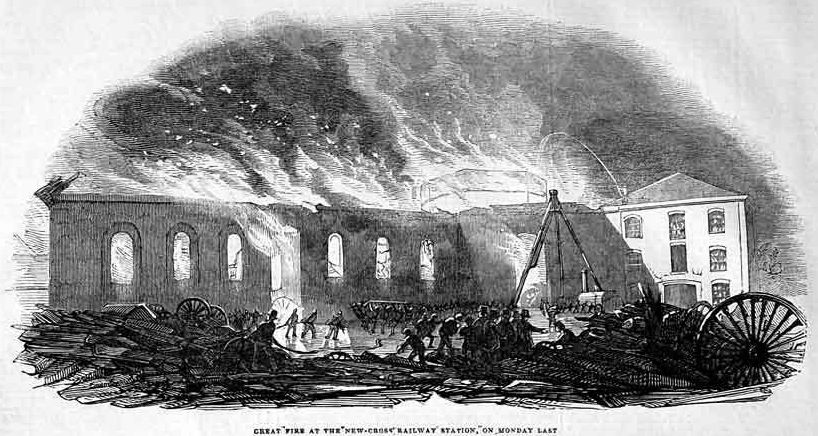
The New Cross station is to the above railways what Wolverton is to the London and Birmingham line. It communicates with the metropolis by the Kent Road on which it is situated; and with the Thames by part of the old Croydon Canal. The area occupied by the station is about equal to that of Russel Square. it consists of an assemblage of vast workshops, large lathe and planning machine rooms, furnace rooms, carpenters’ and painters’ room, carriage and fire engine houses and a grand octagonal engine house, nearly as larges as the Colosseum in the Regent’s Park; in the centre is a stone shaft, surround by a circle of columns supporting a roof in the manner of the Chapter-house, at Salisbury; between these columns are eight large doorways with tracks for the engines and tenders. The height of this vast octagonal building is, or rather was, 70 feet; and with the range of carriage and workshops attached, it was part of the original station, its erected under the superintendence of Mr. Gibbs, the engineer to the Company; it was handsomely built of brick, with stone finishing.
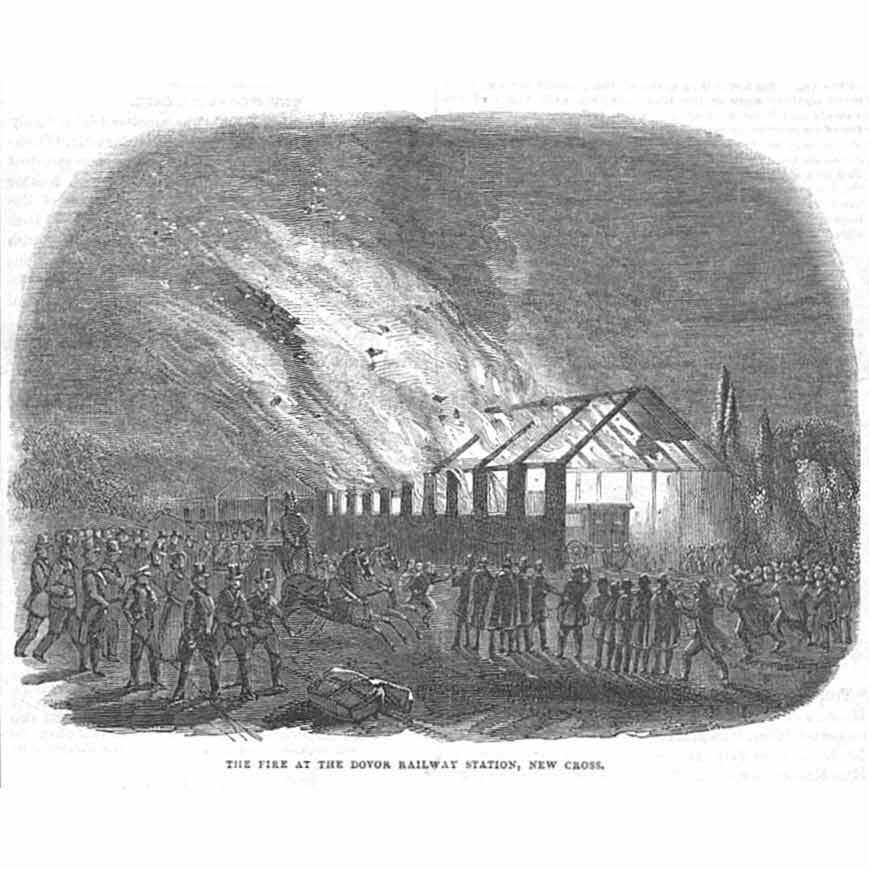
The fate commenced in a loft of this large octagonal building, fitted up as a painter’s shop, upwards of eighty feet in breadth, having in its centre a lantern roof, to the extreme right of the structure, seventy feet. The works were all shut up, and the interior of the station was in a state of animation in consequence of the approaching arrival of the King of the French, he having signined his intention of proceeding to Dover by this route. There were present Captain Charleswood, super indent of the Dover Railway; Mr. Howell, deputy superintendent of the same line;Mr. Cubitt, a engineer; with several others. While the work people were engaged erecting the tent on the platform for his Majesty’s reception, they were startled by cries of “Fire.” The vogue repository was then found to be burning in the upper part, among the paint store, and the flames made such rapid progress, that in less than a quarter of an hour the whole building was in a blaze. The fire was greatly assisted by a quantity of oil and turpentine, as well as paint, that had been laid aside in a part of the engine room. The police force hastened to the spot, and were most active in maintaining order, and saving he property and books from the office adjoining the burning pile. It was near an hour before any engines arrived, and by this time the conflagration had spread to a long building, also used to keep the carriages and steam engines in. By eleven o’clock the roofs of both houses (which were boards covered with lead, and on iron rafters) fell in, and then the engines, amounting to about fourteen, were able to make an effectual resistance. The conflagration was fearfully rapid, the flames rushing up through the lantern, whence they burnt with increased fury, until the roof and fell in. Attempts were then made to save the various shops beneath, but in vain. Engines from the dockyard at Deptford, and from the London fire brigade, reached the scene before ten o’clock the fire having broken out at nine.
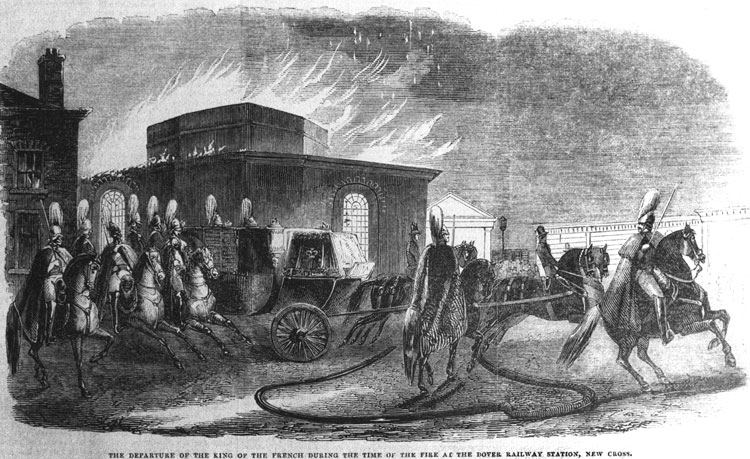
The departure of the King of France during the time of the fire at New Cross station
The firemen at the first appeared to be completely bewildered; the flames were rushing out of the roofs and nearly every window in the octagon and fitting departments, and were roaring sound. At the same moment, the molten lead, was running from the cornices round the blazing property, thereby exposing every one to great danger. Nevertheless every man exerted himself with the greatest intrepidity, and by that means a long range of premises used for the erection of carriages was saved. There was a spacious tank between the two building, but the fire was so fierce, that it completely reached over the tank, and almost set the roof a blaze. It was indeed truly distressing to see the valuable lathes and splendid machinery in fitting house falling a sacrifice. There was no alternative, the whole was quickly destroyed or rendered useless. For two hours and upwards the fire continued to rage with awful violence, although its progress bad, to a certain extent been stopped. The immense mass of inflammable materials that the two buildings contained with the heavy floors and roofs, caused the fire to be frightful extent, the flames risings to such a great altitude as to be seen for many miles distant attracting some thousands of persons to the spot.
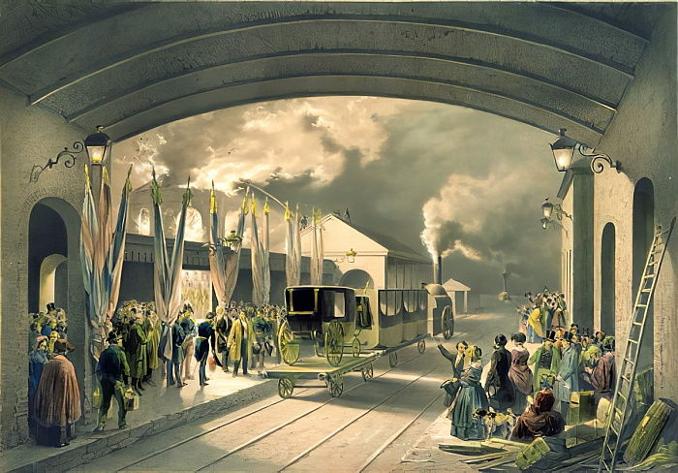
Artist Unknown
King Louis Phillippe of France being greeted at New Cross, during his visit to Windsor Castle
His Majesty the King of the French arrived at the station at about eleven o’clock, and on alighting expressed his great regret at the calamity.
One very fortunate circumstances was that the wells from which the engine worked were powerfully charged with water the engines being supplied by steam engine on the works, and to this in a great measure may be attributed the saving of the remainder of the company’s property.
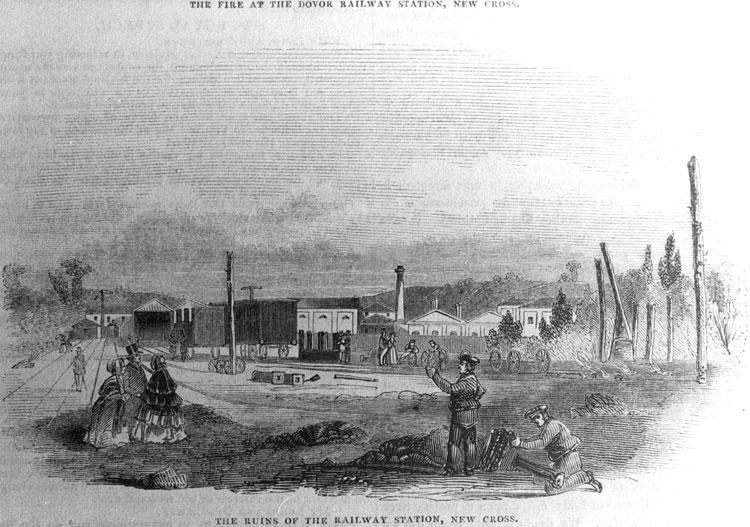
At one o’clock a great number of the engines were still in full operation, there remaining a great body of fire in the ruins. The hose of some were directing streams of water from the warehouses and adjacent buildings into the burning mass beneath, while the firemen were stationed on all sides to prevent the flames from extending. Up to this period, and an hour subsequently, several attaches of the King of the French, who were to follow in another train after the royal carriage, were to be mingled with the police and firemen. Their state dresses wonderfully contrasted with those of the fire corps, whose appeal was covered wit mud, and their faces as black as sweeps. In the course of another half hour or so the whole of the suite left the New-cross station in a special train, on their way to Dover.
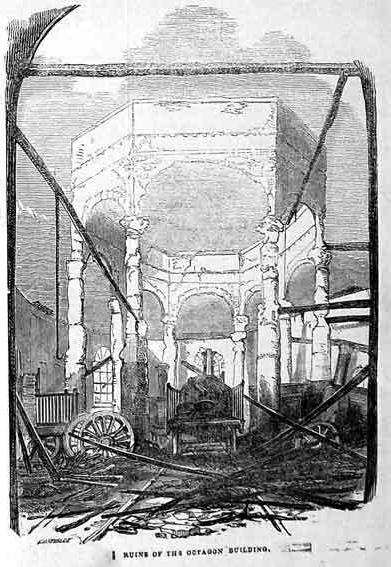
The ruins of the New Cross Octagon Loco Shed
The exact amount of property destroys as well as the extent of insurances, are as follows:- The octagonal building, as well as the fitting house, which was 120 feet long by 30 wide, were insured in Westminster Fire Officers for £4600, and the contents in the Phoenix Office to the amount £9000, making a total of £13600. There were in the octagon six engines and three tenders, the former valued at £1300 each, and the latter at £200 each. It will cost an enormous more to replace the machinery alone. The company estimate the damage under £20,000.
The cause of the fire had been traced to the spontaneous ignition of some vegetable black which was stowed in the paint room.

The ruins, particularly those left of the octagonal or principal buildings, as the fire gradually subsided, had a most remarkable appearance. The upright walls of the upper story, or lantern, which was supported by four stone pillars, while the body of fire was raging beneath, was so charred and splinter by the intensity of the heat, that they resembled the fretted pillars of some ancient monastery, which had been worn away by the lapse of years, while the wreck of several locomotives was to be seen along the extensive line of shedding, presenting a most serious loss of this valuable property of the company.
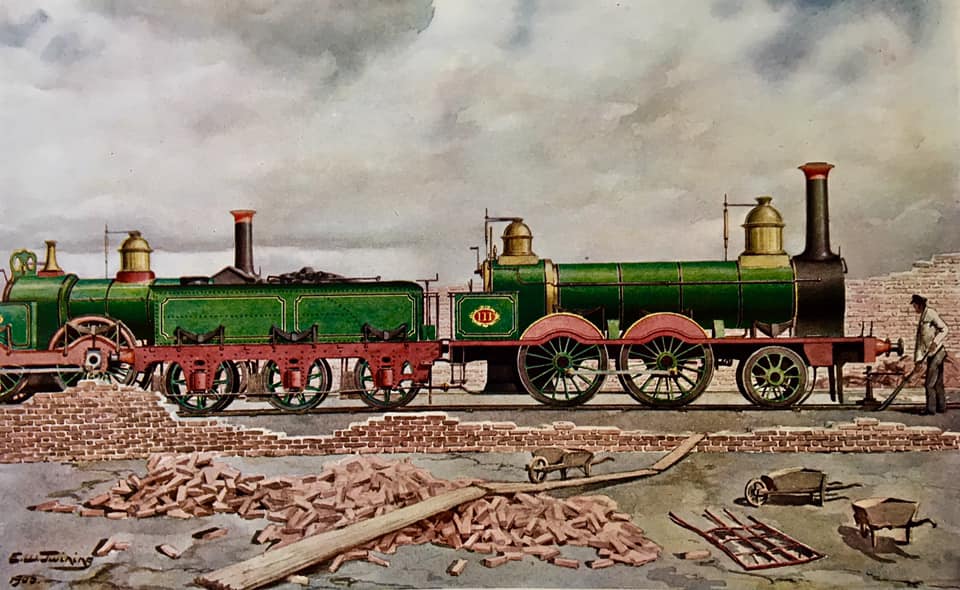
ARTIST ERNEST W. TWINING
Engine No.111 at New Cross Loco Shed after the fire